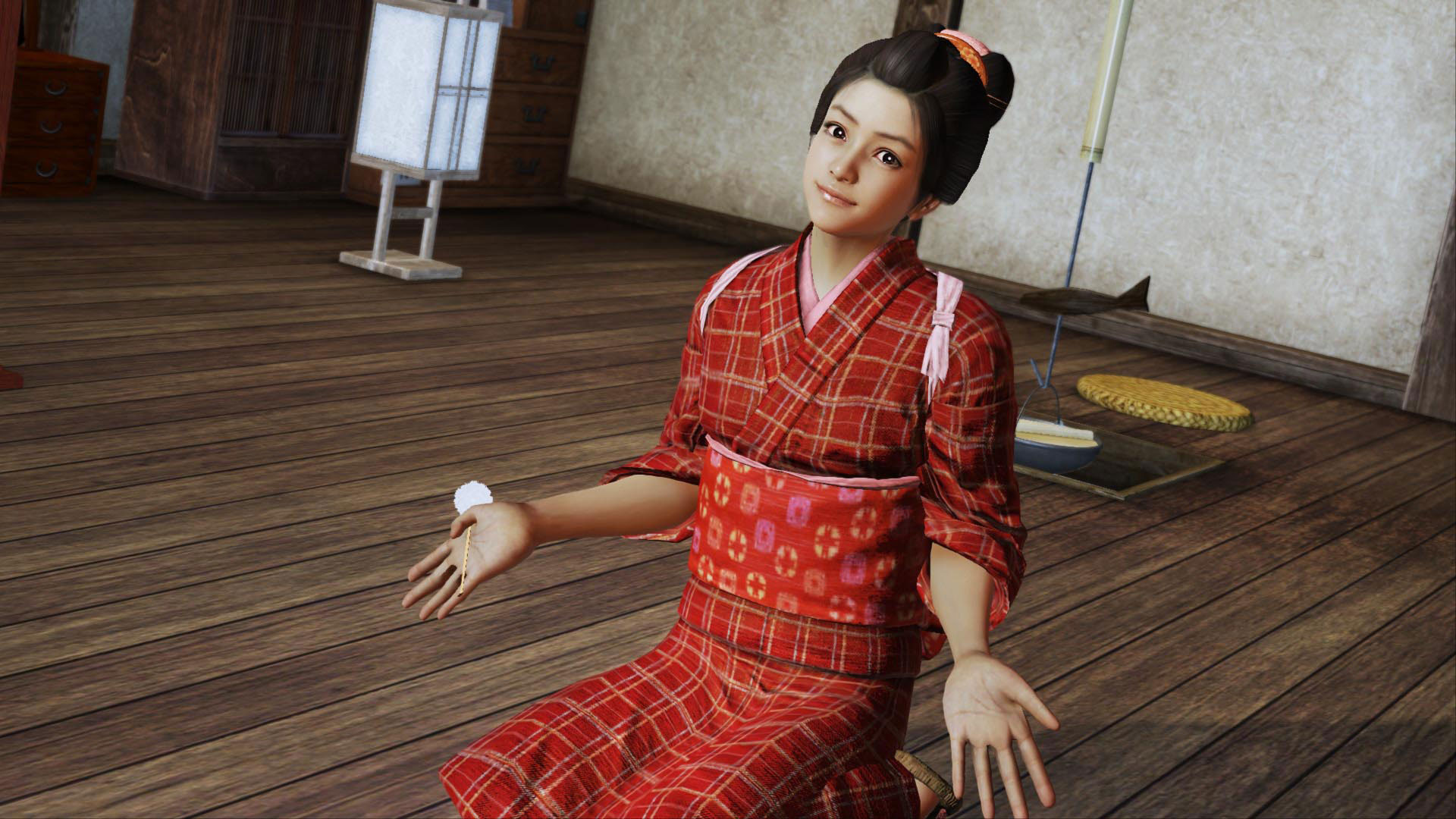We already knew SEGA was increasingly interested in making their games available in Asia, given how much potential for growth the market has. Even so, I was surprised to find how fast and determined SEGA apparently is to release their games there. For the English market, SEGA always seems hesitant, perhaps even reluctant, to localize their games. For example, the localization for the original Project DIVA F almost didn’t happen. Only an official Facebook poll, asking fans if they really wanted to see the games localized, drew enough interest to give the localization a green light. Similarly, it took them years to localize Yakuza 5, and it only happened with the help of Sony’s Third Party Productions. Phantasy Star Nova and Shining Resonance, both available with Chinese subtitles in Asia, were never even localized in English.
Further showing the contrast between SEGA’s localizations for Asia and the West, a NeoGAF forum member recently pointed out that, according to Sony’s website, Yakuza 0 may in fact be scheduled for a 2017 release. Yet for the Chinese market, SEGA is planning to launch most of their lineup of SEGA and Atlus games almost simultaneously with their release in Japan. As evidence for their interest in the market, in the past three months alone SEGA have launched Chinese versions of their websites for all of the following games:
- Hatsune Miku: Project DIVA X
- Miracle Girls Festival
- Dengeki Bunko Fighting Climax: Ignition
- Persona 4: Dancing All Night
- Valkyria Chronicles: Azure Revolution
- Valkyria Chronicles Remaster
- Blade Arcus from Shining EX
- Yakuza Kiwami
As noted earlier, the release date for these games really stands out. Yakuza Kiwami will be released on January 21, the same day as the Japanese release. And the Chinese version of Valkyria Chronicles Remaster will actually be released ahead of the Japanese launch, on February 4th (in Japan, the game will launch on February 10th). Out of the entire list of games above, only Persona 4: Dancing all Night was released in the West. For the others, no English localization has even been announced.
So why is SEGA able to release these games so swiftly in the Chinese market? The CEO of SEGA Games, Haruki Satomi, had this to say in Sega-Sammy’s yearly financial statement:
Overseas, the United States and Europe market and Asia’s rapidly growing market each account for sales of about ¥1 trillion. In particular, we view traditional Chinese character areas such as Taiwan, Hong Kong, and Macau as extremely promising markets, partly because of their strong affinity with Japanese culture. Our strategies fall under two broad categories: those for the United States and Europe and those for Asia. In Asia, rolling out domestic titles is comparatively easy because of the region’s greater cultural affinity with Japan. However, the United States and Europe call for a different approach that involves adapting titles to suit Western culture. For each region, optimal operational management of titles and business models is different.
— Haruki Satomi, CEO of SEGA Games Co., Ltd
The cultural difference between the West and Asia, or rather the changes made to the games because of them, are indeed a much debated topic at the moment. However, if we look at the SEGA games localized in the past two years, how much was actually changed to suit the Western culture? As it turns out, most games weren’t altered at all. The content in the English version of Yakuza 5 was pretty much the same as in the Japanese version, with only a few songs not included, likely due to licensing issues. Project Mirai DX, Project DIVA F, Project DIVA F 2nd and Dengeki Bunko Fighting Climax also remained intact. Only Dungeon Travelers 2 from Atlus required some changes so that the game could avoid getting an AO rating from the ESRB.
Hostess Clubs are certainly what you could call a cultural difference between Asia and the West. They were removed from Yakuza 3’s localization because of time constraints and because they “didn’t resonate with Western culture”. The backlash from the fans was considerable, and the following localizations of both Yakuza 4 and Yakuza 5 retained the clubs.
Interestingly, earlier this year, Satomi himself even stated that their Japanese games can indeed sell in the West, as long as the quality is there:
“As far as the Western market goes, we learned a lot from Atlus,” continues Satomi. “If we can make a title with proper quality, I believe there’s a good chance for it to do well even in the West for players that like to play Japanese games.”
So while the cultural differences are certainly a factor, it doesn’t seem like this alone could explain the stark difference in not only the number of titles being localized, but also the efficiency at which they’re being released. Perhaps another factor could be the fact that the games listed above for the Chinese market all retain the original Japanese voice acting. In fact, not even all of these games get Traditional Chinese subtitles. Miracle Girls Festival, Dengeki Bunko Fighting Climax: Ignition and Dengeki Bunko Fighting Climax: Ignition, for example, are listed with only Japanese subtitles even for their release in Asia. This is something we rarely see in the West, and it explains why at least some of these games are easier to localize. Yet, none of the games localized by SEGA in recent times required dubbing either. And translating a game to Chinese is likely not a whole lot easier than it is to translate in English.
Undoubtedly, there are more reasons for the difference between the Chinese and English localizations which haven’t been stated. For example, there’s still distribution and marketing involved. And perhaps it’s simply a matter of past failures in the West that have discouraged SEGA from spending more resources there, instead opting to spend that money on new markets with a culture more similar to their own. But regardless of the reasons, the speed and decisiveness that SEGA is now showing to get their games on the Chinese market is simply something I haven’t seen from them in the West in recent times. SEGA is trying to rebuild the brand and show the image of a reinvigorated, young and dynamic company, but at the moment these changes aren’t apparent in Europe and the Americas. SEGA Europe, while now a powerhouse in terms of game development for Sega-Sammy, seems largely focused on their own range of PC and mobile games, separate from Sega of Japan. Sega of America, having been downsized and relocated, seems largely in a state of transition and it’s not clear how much resources they really have left.
Bandai Namco’s Tales of Berseria was recently announced for the West, on PC and PS4. Is there really any reason SEGA can’t do the same for games like Valkyria: Azure Revolution?
I can’t help but think how much better it would be for SEGA to announce localizations soon after, or even simultaneously with, the announcements in Japan. Atlus did exactly that for Persona 5 and Odin Sphere Leifthrasir, and while it’s understandably more difficult to localize games while they’re still being developed, the benefits in terms of marketing are certainly there. When it comes to SEGA, the hype surrounding an announcement for a new game in Japan is immediately tempered by the thought that it may take years for the game to be localized, if at all. Right now, we can write articles about games from Sega of Japan, but most of the time we find ourselves ending the article with the note that we don’t know if the game will be localized. If the 2017 release date for Yakuza 0 in the West is accurate, it’ll be old news by the time it’s released, and appear outdated in comparison to more recent games.
As it stands, SEGA is lagging behind the competition in various ways. Not only when it comes to localizing their games, but also porting them to PC. SEGA ported Valkyria Chronicles to PC at around the same time as Square-Enix ported Final Fantasy XIII. Back then, Valkyria Chronicles was considered to be a considerably better PC port then FF XIII. Yet, since then Square-Enix ported Final Fantasy XIII-2 and now Final Fantasy XIII-3 to PC. SEGA on the other hand seems slow to react and follow-up on their initial success. With no PC ports of Valkyria Chronicles 2 or 3 in sight, or an announcement of Valkyria: Azure Revolution for PC, it feels like SEGA is again losing ground on the competition. In the same way, Phantasy Star Online 2 was once an ambitious and innovative release in the F2P genre. But that was almost four years ago, and the market has already changed considerably.

